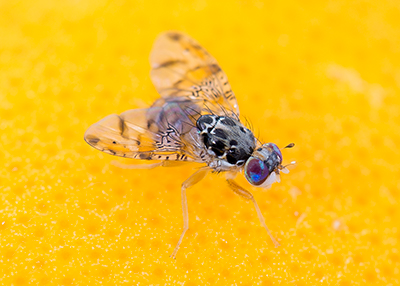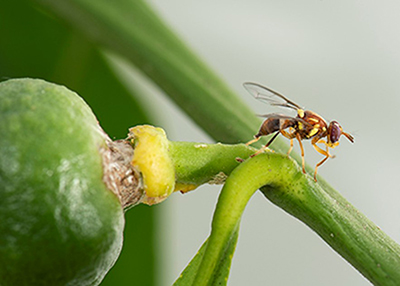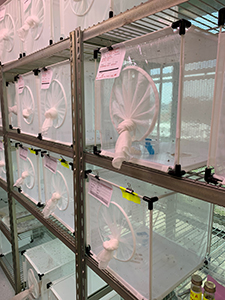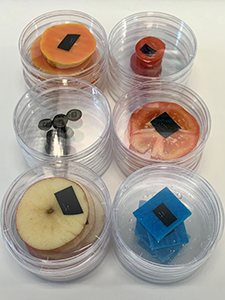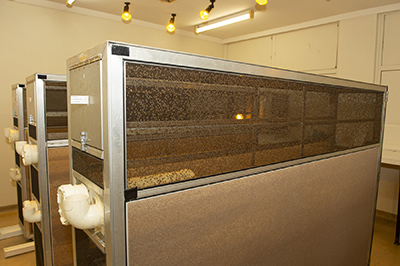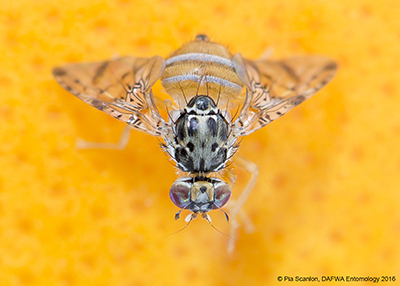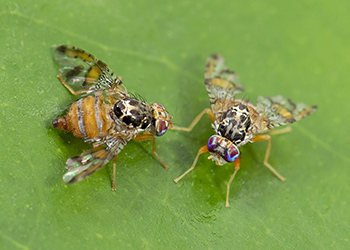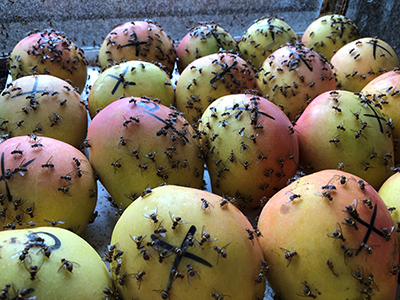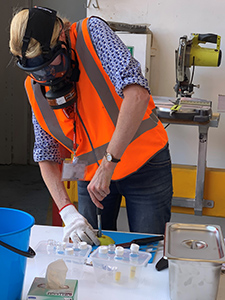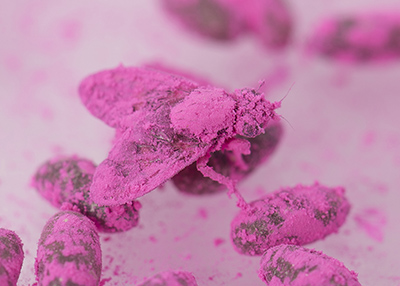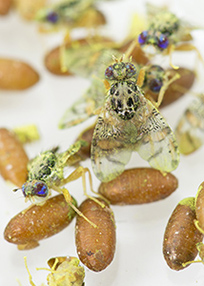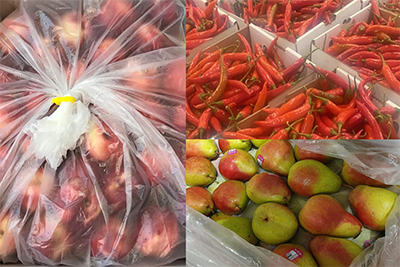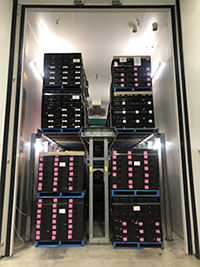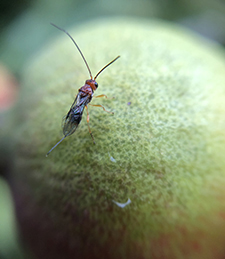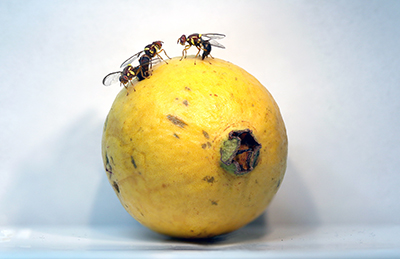The Strengthening Australia’s Fruit Fly System Research Program (the Research Program) is an initiative under the Intergovernmental Agreement on Strengthening Australia’s Fruit Fly Management System. The program funds research and development projects to support the delivery of an enhanced and national approach to managing fruit fly.
These projects complement previous and current research and provide national benefits for the Australian fruit fly management system. This work ensures there is a collaborative approach to address current and prioritised fruit fly research gaps and contributes to Australia’s biosecurity and international trade objectives.
Our partners
We are working collaboratively with all major fruit fly management stakeholders.
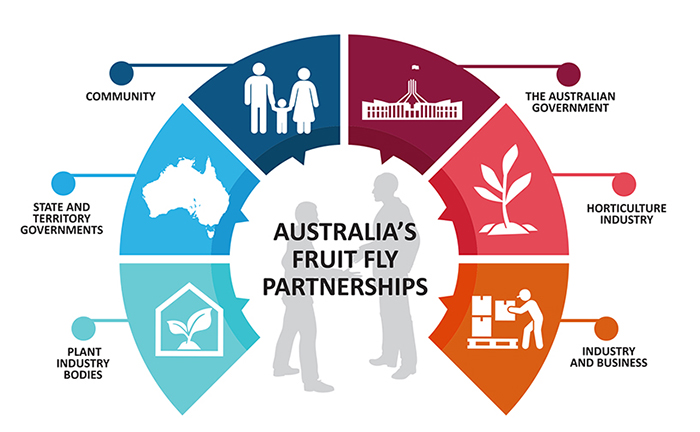
The following bodies are the mechanisms for shaping the strategic direction, policy settings and technical basis for how fruit fly is managed in Australia:
- National Biosecurity Committee (which has oversight of the Research Program)
- Plant Health Committee
- National Fruit Fly Council
Funding
The total funding for the Research Program is $13 million, comprising $6.5 million from the Australian Government and $6.5 million co-contributed by state and territory governments.
Projects underway
Six projects have been commissioned for the research program.
Context
Successful pest management relies on three core pieces of information:
- where the pests are (distribution)
- seasonal cycles affecting pest activity (phenology)
- reproductive patterns and population changes (demography).
Improving knowledge of Australia’s fruit fly species may lead to improvements in reducing pest management costs, improving crop yield and quality, and improving regional economies and food security.
Projected outcomes
This project is carrying out new research, and mines existing data relevant to the phenology, demography and distribution for six of Australia’s fruit fly species (Tephritidae):
- Bactrocera tryoni (Queensland fruit fly)
- Bactrocera neohumeralis (Lesser Queensland fruit fly)
- Bactrocera aquilonis (Northern Territory fruit fly)
- Bactrocera jarvisi (Jarvis’ fruit fly)
- Zeugodacus cucumis (Cucumber fruit fly)
- Dirioxa pornia (Island fly).
This project:
- collects and analyses demographic data for target species (reproductive capacity) on standard diets and a number of known hosts
- collects accurate data and updates host lists for all target species
- collects constant-temperature development-rate data sets
- carries out physiological research on Bactrocera tryoni to better understand non-temperature related patterns in its seasonal phenology
- develops molecular diagnostic tools which can automate the identification of large, multi-species trap catches.
Our partners
We are working collaboratively with state and territory governments and the Queensland University of Technology to implement this research project.
Project status
As of February 2022:
- Most of the species have completed preliminary trials and are starting full trials to obtain life table data.
- Trials to assess adult preference and larval performance with various fruit types over time are ongoing.
- Testing on host availability affecting population peaks of Qfly initially shows that females live significantly longer than males.
- Work continues on optimising a lure for Z. cucumis. Planned testing on the effectiveness of vial or thermoplastic delivery mechanisms will be undertaken later this year.
- Two new fruit fly LAMP assays, for B. jarvisi and D. pornia, have been fabricated and are undergoing testing.
Context
While current management practices for Mediterranean fruit fly (Medfly) predominantly target the adult stage of the insect, biological control offers a viable tool for the suppression and management of all fruit fly life stages. Biological control includes the use of any organism that will act to kill or control the pest.
Projected outcomes
The research project is undertaking proof-of-concept research against Medfly using commercially available entomopathogenic microorganisms (fungi) to attack fruit fly eggs and larvae.
This project is:
- Evaluating entomopathogenic fungi (EPF) with the potential to target juvenile life stages of Medfly.
- Increasing the number of tools available to the public, growers, grower groups and governments.
- Improving our understanding of the commercial viability of entomopathogenic fungi to form part of an integrated fruit fly management approach.
- Benefitting jurisdictions in which Medfly has the potential to establish and cause crop devastation.
Our partners
We are working collaboratively with the Western Australian government through the Department of
Primary Industries and Regional Development to implement this research project.
Project status
As of February 2022:
- Research literature continues to be collated.
- Work has commenced on the cost benefit analysis utilising industry standards.
- Ongoing testing of susceptibility of Medfly to entomopathogenic fungi (EPF) in all stages of life cycle continues through oral and contact bioassays.
- Semi-field experiments undertaken to test the efficacy of 4 strains of EPNs against larvae, pupae and adult B. tryoni started in January 2022.
Context
Methyl bromide fumigation is a commonly used post-harvest treatment of fruit and vegetables prior to domestic and international movement of horticultural commodities.
Optimised fumigation schedules will provide confidence that treatments are effective against fruit fly while minimising impacts on fruit quality.
Projected outcomes
This research project will look to optimise and rationalise methyl bromide disinfestation treatments against Queensland fruit fly (Bactrocera tryoni) (Qfly), in a range of horticultural commodities with recommendations put forward that strengthen interstate certification assurance procedures.
This project is generating efficacy data on selected key commodities, allowing for the development of an appropriate methyl bromide dose for each group.
Our partners
We are working collaboratively with the Queensland Government through the Department of Agriculture and Fisheries to implement this research project.
Project status
As of February 2022:
- Two new Qfly colonies have been successfully established in August and November 2021 for research which required colonies less than 12 months old.
- Commodities prioritised include mango, plum, chilli, citrus, nashi, passionfruit, raspberry, and cherry. Six of these will be chosen for the full efficacy data package.
- Efficacy data on each life stage of Qfly continues to be produced.
Context
A sterile insect production facility has been operated by the Western Australian (WA) government since 1989, and currently provides sterile male Mediterranean fruit flies (Medfly) for outbreak control to other states. The WA Government recently determined that the longstanding funding arrangements for the facility were no longer sustainable or cost beneficial for their jurisdiction.
A cost-benefit analysis has been undertaken to help inform further decisions on the future of the facility.
Projected outcomes
As of February 2022:
This project analysed and reported on the costs and benefits of maintaining the facility. The analysis identified the current stakeholder beneficiaries of the facility and provided an estimate of the economic benefit to each beneficiary.
Assessment of economic benefits included the benefits from sterile insect technique (SIT) when used as a control method for localised suppression in endemic areas and for potential eradication of Medfly. This was then compared with estimated costs of no control.
The costs included maintaining and operating the facility. The future viability of the facility and likelihood of needing further funding for the facility was also considered.
Our partners
We engaged AgEconPlus Pty Ltd to undertake this analysis and provide an assessment.
Project status
As of February 2022:
- This project is complete, with the final report being used as a reference for government bodies going forward in future projection planning for fruit fly management.
Context
Methyl bromide fumigation is a commonly used post-harvest treatment of horticultural commodities prior to their domestic and international movement of horticultural commodities.
It is important that operators understand the effects different types of packaging have on the results of fumigation.
Projected outcomes
This research project will review packaging used in Australian domestic horticulture industries.
The project is:
- examining improving air and methyl bromide movement through a fumigation chamber (pallets, liners and boxes)
- investigating the permeability of methyl bromide through liners and sorption rates of boxes in use in Australia
- providing results which can be used to improve guidelines on packaging protocols that result in better fumigation practices and are tailored to different packaging, allowing more flexibility while maintaining biosecurity.
Our partners
We are working collaboratively with the Victorian government through the Department of Jobs, Precincts and Regions (Agriculture Victoria) to implement this research project.
Project status
As of February 2022:
- The first of 3 air movement trials has been completed. Preliminary results show air is not being evenly distributed throughout fumigation chamber.
- A new sensor, which has been purchased and tested in preliminary experiments, is having a prototype housing unit designed and manufactured.
- Second and third air movement trials will monitor air flow around key pallets to identify if there are points within the pallets that are subject to low/high air flow.
Context
While current fruit fly management practices for Queensland fruit fly (Qfly) predominantly target the adult stage of the insect, biological control offers a viable tool for the suppression and management of all fruit fly life stages. Biological control includes the use of any organism that will act to kill or control the pest.
Projected outcomes
The research project is undertaking proof-of-concept research for biocontrols against Qfly.
This project will:
- Rear and mass-release parasitic wasps which are already present in Australia and are known to target Qfly.
- Isolate and screen existing candidate entomopathogenic fungi and entomopathogenic nematode strains for effectiveness against adult, larval and pupal Qfly in laboratory bioassays.
- Evaluate how effective entomopathogenic fungi and entomopathogenic nematodes in soil are at killing pupae (also in the soil).
- Apply entomopathogenic fungi and entomopathogenic nematodes as an integrated pest management tool (IPM) by exploring areas such as the formulation of a biopesticide, the ecology of the insect and its local environment, and interactions with other IPM tools.
This research project is a component of collaborative research complementing work funded
by Hort Innovation which includes parasitoid wasp release trials - Parasitoids for the management of fruit flies in Australia (MT19003).
Our partners
Through Agriculture Victoria, we are working collaboratively with state and territory governments, universities and horticultural industries (apple and pear, citrus, raspberry and blackberry, strawberry, summerfruit, table grape and vegetable).
Project status
As of February 2022:
- Six of the 11 site trials for mass release have taken place of F. arisanus and D. kraussii to monitor the dispersal of population in urban areas.
- Testing continues on various types of non-crop ground covers as alternative food sources for parasitoids.
- Experiments are continuing on entomopathogenic nematode (EPN) in potted trials.
- Field studies of entomopathogenic fungi (EPF) are underway to help determine the best application method and parameters required for a successful semi-field experiment, expected to run in autumn 2022.
Research and development outcomes
At the end of the Research Program, research outcomes and outputs will be integrated into fruit fly related biosecurity activities. They will support industry, landholders, and the community to enhance the efficiency and effectiveness of activities to manage fruit fly.
Find out more
Visit The Smart Fruit Fly Management Measure.
For general enquiries, contact fruitflyRDE@awe.gov.au

